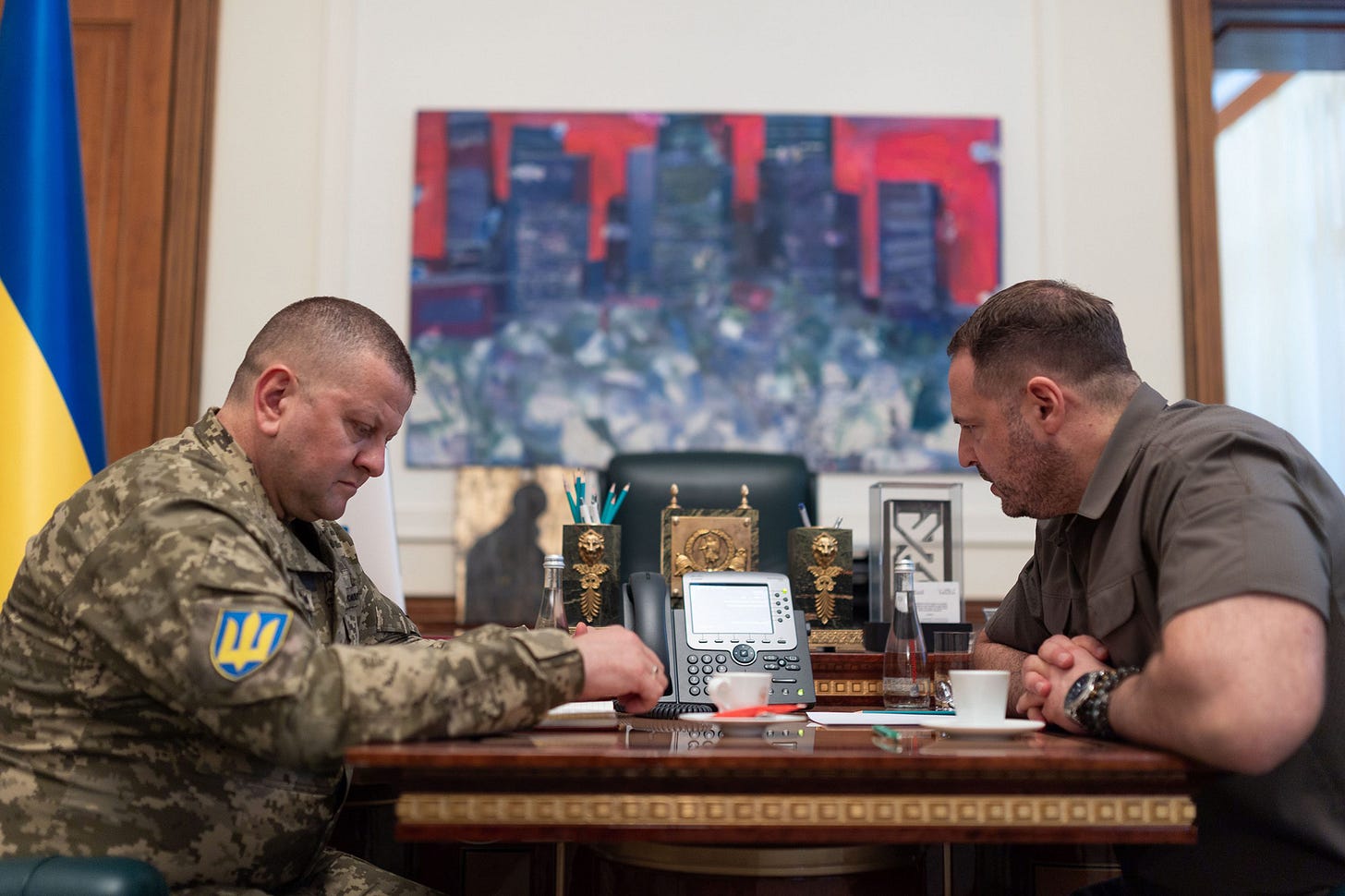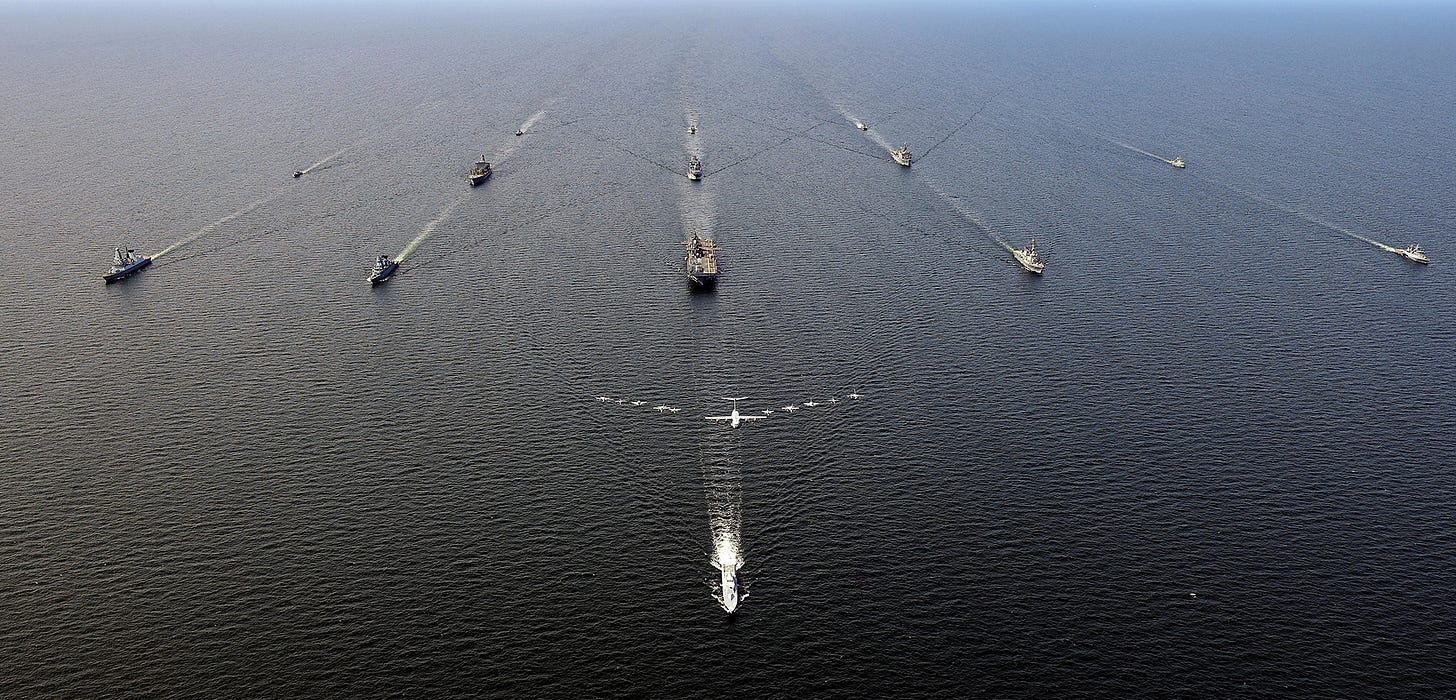Fog of War: A Whole New Scenario for Nord Stream Bombing?
Very little can be taken at face value — not documents, not claims, not supposedly trustworthy sources.

The finger-pointing about the destruction last year of Russia’s Nord Stream natural gas pipelines is getting pointier. And, by my reading, the matter grows yet more intrigue-filled.
As you may recall, in my column of March 4, 2023, I expressed skepticism about Seymour Hersh’s exclusive and highly controversial report from a purported intelligence insider — who stated that the bombing was a United States government operation. Since then, The Washington Post has reported that, no, it was actually a Ukrainian operation.
Having covered the machinations of intelligence apparatuses and White Houses on highly sensitive matters for many years, I’m naturally wary of all these scoops. It’s just as likely that we’re all missing larger agendas that are in play.
The truth, whatever it is, may not be known for years — if ever. However, I want to propose the eminently logical possibility that, in fact, it was a Ukrainian operation, but one helped, on a highly deniable basis, by the United States.
This would be, for both players, a win-win: The US helps Ukraine, keeps away from any sort of direct conflict with Russia, and Ukraine gets seen, eventually, and despite its denials, as a decisive, capable, and muscular entity that the world — and Russia — better not underestimate.
****
When I highlighted notable deficiencies in Hersh’s piece, raising questions about the source’s actual knowledge, I further identified the expanding array of possible perpetrators besides Washington — including even Russia itself. I also cited a thoughtful contemplation by an exiled former Russian oil official who, toting up possible culprits, unsurprisingly included Ukraine.
Interestingly, studying new developments, one can see the fascinating possibility that Hersh’s source may have been aware before the rest of us of leaked intelligence assessments that assigned blame to Ukraine but, for unclear reasons, replaced it as the alleged sponsor of the pipeline bombing — with the United States.
What Biden Knew, and When
One begins to ponder that, on the basis of The Washington Post’s recent exclusive, US intelligence learned — a year ago and prior to the attack – that the Ukrainian military was planning just such an endeavor. .
The Post noted: “All those involved reported directly to Gen. Valery Zaluzhny, Ukraine’s highest-ranking military officer, who was put in charge so that the nation’s president, Volodymyr Zelensky, wouldn’t know about the operation, the intelligence report said.”

If true, then Zelensky had plausible — or, perhaps, implausible — deniability. It means he may not have known at all, or may have known on a winking basis. He has since denied any involvement by Ukraine.
The Post’s story is yet another to emerge from the documents leaked by a rogue, extremely low-level military man, Jack Teixeira. He’s the 21-year-old Massachusetts Air National Guard member who was arrested for stealing and sharing classified materials on the online chat platform Discord, which were subsequently brought to the Post.
The claim underlying the Post piece — that Ukraine may have been behind the bombing — is said to have originated with one individual in Ukraine. That source purportedly told intelligence officials from an unnamed European country allied with the United States that plans were afoot in Ukraine for a bombing. That US ally then shared the story with the CIA in June 2022 — three months before the actual bombing of the pipelines occurred in September 2022.
The report contained highly specific details that, we are told, were subsequently corroborated by German investigators.
A cautious reporter would wonder who the Ukrainian source was, and what their motive was in outing Ukraine. Especially since the scenario was then corroborated by Germany, which was, initially, one of the more reluctant members of the coalition against Russia, their reluctance possibly motivated, at least in part, by a long-term need for Russian natural gas. (Before the invasion of Ukraine, 55 percent of gas consumed in Germany was imported from Russia; Germany is a part owner of the pipeline.)
Blaming Ukraine of course serves Russia’s interests, and perhaps some factions in Germany, because it will surely be used to reduce aid to Ukraine and put pressure for some kind of “settlement” that could bail out Putin (and help Germany address its national security concerns around a steady energy supply). While Germany backs Ukraine, politicians in the country have battled over the correct degree of commitment, with some considered to have been extraordinarily naive about Putin.
A Curious US Reaction
The US did not keep this explosive information to itself. The CIA quickly briefed other European countries at the time. Moreover, the Post says various unnamed US sources confirmed the general scenario.
This seems a bit strange to those of us used to constant secrecy and subterfuge in such matters.
Further, one wonders why Washington would want to “out” Ukraine, if that’s what it did.
Publicly, the administration has expressed outrage over the bombing, while perhaps privately understanding that such things are an inevitable aspect of a war with high stakes and where critical infrastructure is routinely targeted.
When the bombing took place, President Joe Biden condemned it as a “deliberate act of sabotage,” and pledged an investigation. He did not accuse Russia of being involved, but he did generally accuse Russia and Putin of “pumping out disinformation and lies.”
It’s not clear who exactly in the administration knew what about the intelligence blaming Ukraine, which was surely closely guarded at high levels, even if the low-level Teixeira was, ridiculously, able to access volumes of incredibly sensitive material.
All of this came about in a very combustible situation — which, it is important to note, was engendered when Russia launched its unilateral invasion of Ukraine. Given all the sensitivities, the need to prevent Russia from succeeding in its aggression but also to avoid a wider conflict directly drawing in the United States, some dissembling and misdirection is to be expected.
However, this all gets even more interesting when one contemplates Hersh’s source and their claims.
A Curious Coincidence?
Consider this passage from the Post report:
The intelligence summary says that the Ukrainian military operation was “put on hold,” for reasons that remain unclear. The Ukrainians had planned to attack the pipeline on the heels of a major allied naval exercise, known as BALTOPS, that ran from June 5 to 17, 2022, according to the report. [Emphasis added.]
But according to German law enforcement officials investigating September’s Nord Stream bombing, key details emerging about that operation line up with the earlier plot.
(That passage, which is a little confusing, appears to be saying that although the original planned Ukrainian attack was put on hold, the actual bombing may have been the work of that same unit, perhaps gone rogue, based on similarities with the original plan.)
Which is interesting because of another similarity:
Compare the above with what Seymour Hersh claimed in his article of February 8, 2023, “How America Took Out the Nord Stream Pipeline”:
Last June, [US] Navy divers, operating under the cover of a widely publicized mid-summer NATO exercise known as BALTOPS 22, planted the remotely triggered explosives that, three months later, destroyed three of the four Nord Stream pipelines, according to a source with direct knowledge of the operational planning.
Now, what in the world is going on here? Some source told Hersh that the United States committed the bombing, planting the devices at the very time — and in the very same way, on the heels of the BALTOPS 22 exercise — that the European intelligence service says Ukrainian teams were waiting for their chance to act.
Did Hersh’s “insider” know something? It may be that, well before they were revealed to The Washington Post, the source saw some of those documents, or heard about them. After Texeira uploaded them to Discord, they were shared on various platforms —YouTuber wow_mao, the rightwing online message board 4chan, and Russian channels on the messaging service Telegram.
If Hersh’s source only saw fragments of the story, he may have assumed they were about what the US was planning to do.
But if those documents really did implicate the US, as claimed by this source, they had to have been “revised” to implicate Ukraine before being shared with The Washington Post, which seems preposterous. Too many people had already seen the originals.
It should be noted that the world of covert and clandestine intelligence and military operations is one of a so-called “wilderness of mirrors.”

This means that very, very little can be taken at face value — not documents, not claims, not supposedly trustworthy sources. It might be fair to say that the fog of war floats through the web and beyond the ether.
History of Observations,Theories, and Assertions
On September 29, 2022, three days after the pipelines exploded, CNN reported that Russian Navy “support ships” as well as Russian submarines were observed in the area where the three separate and simultaneous explosions occurred. Their sources emphasized, however, that there was nothing unusual about Russian ships being in the area.
Then, in May, a consortium of Scandinavian news organizations unearthed indications that it may indeed have been a self-inflicted wound by the Russians themselves for propaganda purposes.
In a documentary, the Scandinavians described suspicious behavior of Russian ghost ships — their transmitters were turned off — in the vicinity of the blast site before the explosion. And their ships apparently had all the appropriate gear for placing explosives. The consortium’s English-language podcast series has the details.
The above reports were all based on documented observations. Still, Scandinavia feels especially threatened by Russia, so who knows who might have a stake in that report?
***
If there is a lesson in any of this, it is that we don’t just have to worry about AI if we want to know what to trust. The world is already pretty hard to figure out, and it’s only going to get harder.



What utter bs. First, you and Hersh say explosions “destroyed three of the four Nord Stream pipelines”. Not true at all, they damaged the pipelines. Apparently you aren’t aware of safety valves ? No ? Better read up. Those pipelines can be restored to use. Also review the timeline of when Germany decided not to use the Russian natural gas pipelines, Feb 22 and the seven month delay. RF was boasting of €2000 euro gas prices (and dreamed of paying for the SMO debacle they hadn’t anticipated that way. The Nordic investigation is credible, your and Hersh not so much.
"Bail out Putin"
Et tu, Mister Baker?